How to handle paracord
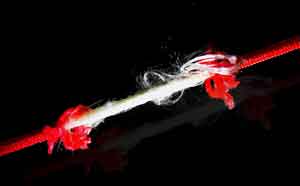
Explains how to handle paracord, such as maintenance, how to put it together, and terminal processing.
overview
A summary of how to store and handle paracord.
Although these are often common, please use them as a reference for different uses depending on location and length.
Notes
The points to be aware of when using paracord are the same as what you can generally imagine, but there are many blind spots, so let's review them.
| Do not hit it with sharp objects | The inside of the paracord is a collection of thin threads, so be careful as even the slightest break can be fatal. Be careful not only of knives but also of sharp rocks. |
|---|---|
| Don't step on it | Stepping can cause invisible internal pain and possible trauma from hitting sharp points on the ground. There is also. |
| Do not apply sudden force | If you apply sudden force, loads higher than normal will aggravate the above-mentioned injuries and damage the deteriorated parts. It can also lead to disconnection. |
| Do not expose to heat | Synthetic fiber ropes easily melt or harden due to heat. Even if it doesn't look like it's melted, the hardened part will lose its strength and there is a risk of wire breakage. |
| Do not leave it wet | When paracord gets wet, it becomes slippery and may come undone without being able to be tied tightly, and if left wet, the paracord itself may deteriorate. |
Although it may vary depending on the product, it is generally said that the useful life of paracord is 4 to 5 years, so please replace it when the useful life has passed. let's.
Damage and breakage of paracord due to accumulated fatigue occur not when tying it, but when it is subjected to a load such as when it is blown by strong winds.
So be careful as it may suddenly cut off when you don't intend it to.
Storage method
Basically, there is no problem as long as you store it away from high temperatures, humidity, and sunlight.
Synthetic fiber ropes are generally sensitive to UV rays, so be careful when exposed to direct sunlight.
When drying wet paracord, also dry it in the shade.
It is recommended that you divide the paracords into smaller pieces depending on their length when storing them, or change the way they are grouped together so that you will not have to worry about which length is which when you use it.

Also, storing it in a sealed box or waterproof bag will trap moisture, so when storing it in a bag, use a cotton bag or mesh bag.
You can check for damage after use, but checking when you are packing up your gear before camping can prevent unexpected disconnections.
How to summarize
Ropes can easily get tangled, so be sure to remember how to tie them together.
Although it doesn't happen often, be careful not to get any kinks when putting it together, and if you see any kinks, don't be bothered and fix them.
When you leave the camp, you may get tired and just roll it up and take it home with you, but if you just roll it up, it tends to get kinked and damage the paracord. This will lead to a mess, so be sure to tie it up neatly when you get home and store it.
1. Fold into a loop
If the rope is short, you can bend it to an appropriate length, but if the rope is longer than 4 meters, make a loop Thumb You can fold it quickly and accurately by circling your elbows from the base of the bag.
If the length is short, use a place to hook the paracord, or if it is for climbing, use the knees of both legs, etc., and adjust the place to go around depending on the length.



If you leave it in a loop, it will come undone, so use the "easy-to-tie stick knot" or "easy-to-untie pull knot" shown below.
2-A. Tie it together with a simple stick knot
A way to tie a knot that is easy to adjust the length and tie for a neat look.
Since it is easy to unify the length of multiple pieces, it is also easy to differentiate by changing the length according to the total length.
-
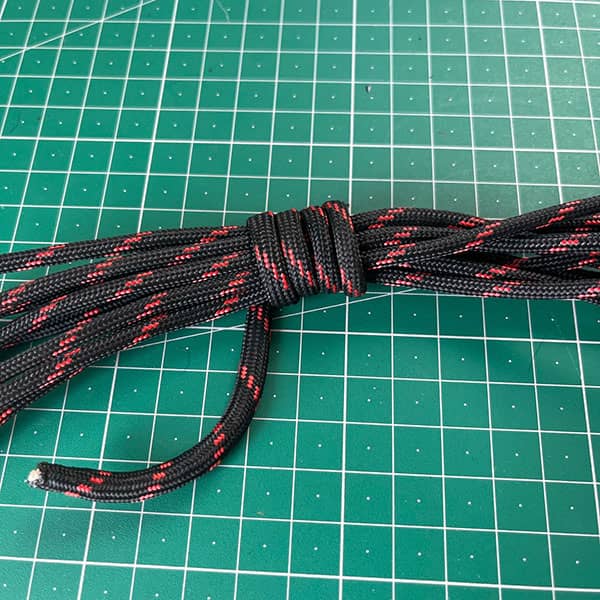
Put the ends of the bundled paracord around the bundle
-
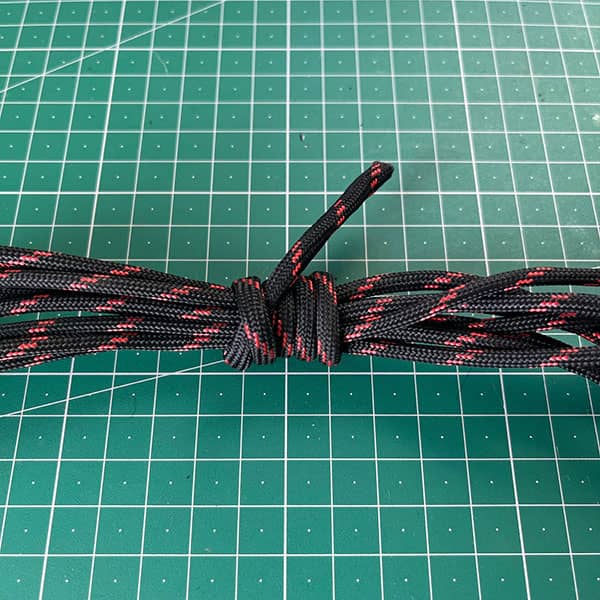
Put the ends through the loop and tighten
The original tying knot involves wrapping the rope around the same length as the length of the bundle, but this requires more effort, so we recommend a simpler version that only wraps around the center of the bundle.
Since the loop is short, it won't come loose easily, but the loops at both ends are large and can often get caught on things, so be careful.
2-B. Tie it together with a pull knot
This is a versatile knot that can be used regardless of the thickness of the paracord, but it requires length, so be sure to adjust the way it is gathered and the length.
-
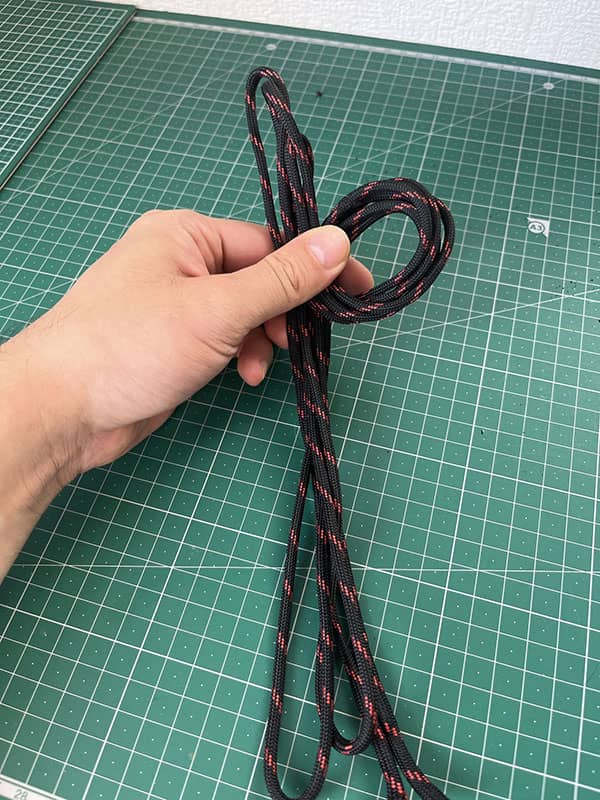
Make a loop near the ends of the bundled paracords
-
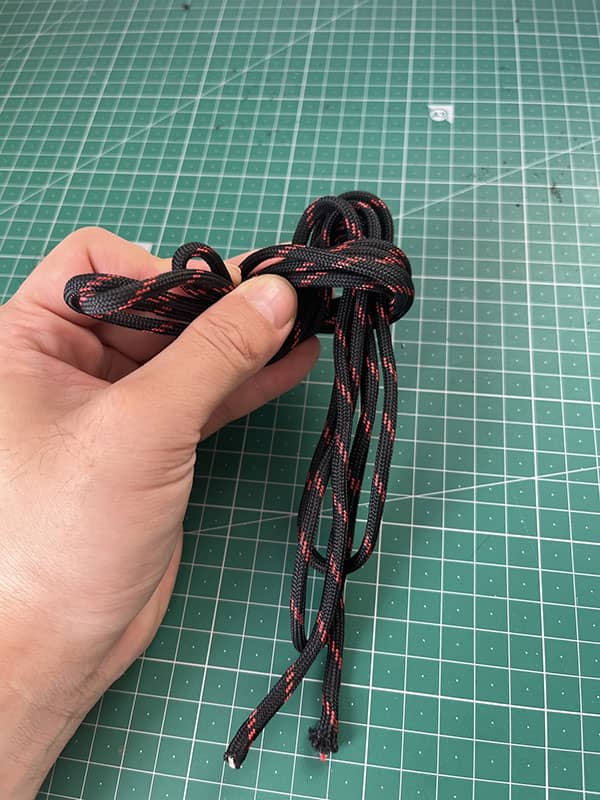
Pass the long, excess center part through the loop
-
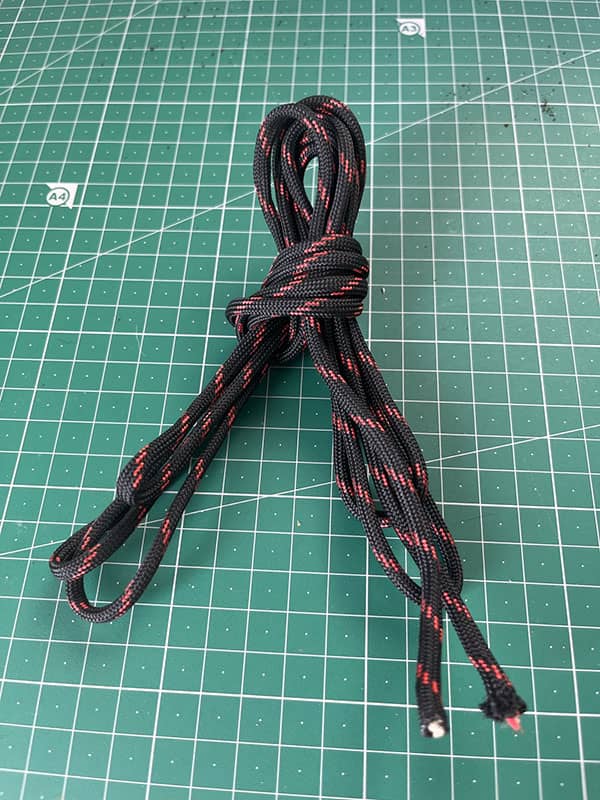
Pull the part that comes out of the loop to tighten
-
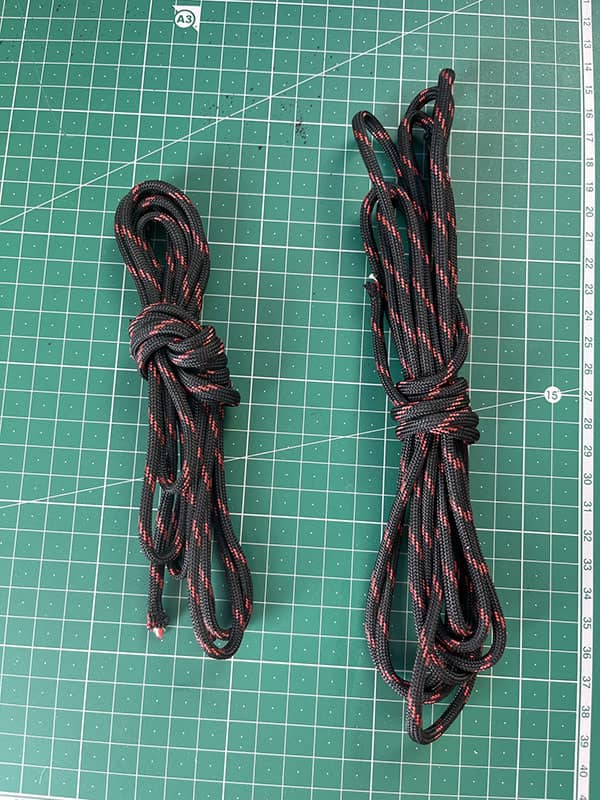
Compare when completed
It is very convenient as it can be easily unraveled by pulling the end of the ring through the loop, but it easily unravels, so if you hook it on something, it may not be what you intended. It is recommended to store it in a bag, etc. as it will easily unravel.
Also, depending on the thickness and length of the bundle, it may be difficult to tie, so until you get used to it, you will need to calculate while tying.
It is easier to tie by tying the paracord long and thin, but depending on the length of the paracord, even that can be difficult.
It is difficult to adjust the length to your desired length, and it is also difficult to align multiple lengths.
As you can see, it is not convenient to store paracord, but it is convenient to use as a guy rope that is left attached to a tent or tarp, so use the right cord in the right place.
How to organize leftover paracord
How to organize the remaining paracord for storage after cutting off the used amount.Storage band can be used to easily summarize them.
Some types are included at the time of purchase, but in the case of roll type, it is shorter. It is convenient to keep it on hand as it will be easier to organize when you need it. It can also be used for home use.




Maintenance
Check the paracord from end to end before and after use and fix any defects.
You can also remove dirt from the paracord by using a cloth or work gloves when checking.
Maintenance basically consists of three things: checking, wiping, and cutting.
Check the following 5 points.
| Kink level | This is unlikely to happen with paracord, but if there are any kinks, straighten them out. |
|---|---|
| Scratches and fraying | Scratches and fraying can cause the wire to break under high loads, so if you find one, be sure to cut out the affected area or replace it with a new one. |
| Shell shift | Check to see if the inner core has slipped out when the ends have not been treated, leaving only the outer skin at one end. |
| Curing/melting | Check to see if any parts have melted or hardened due to heat during camping use. If you find it, cut out the relevant part or make a new one. |
| Discoloration/Corrosion | Check that other camping equipment stored at the same time is not contaminated with liquid or rust. If you find it, cut out the relevant part or make a new one. |
Terminal processing
As introduced above in "Outer skin misalignment", if the ends are not treated, the core will shift and only the outer skin will remain.
It is said that the strength of paracord is 30% outer shell: 70% core, so be sure to treat the ends as there is a higher risk of wire breakage than poor damage.
It's as simple as cutting off the protruding part and burning it with a lighter.
-
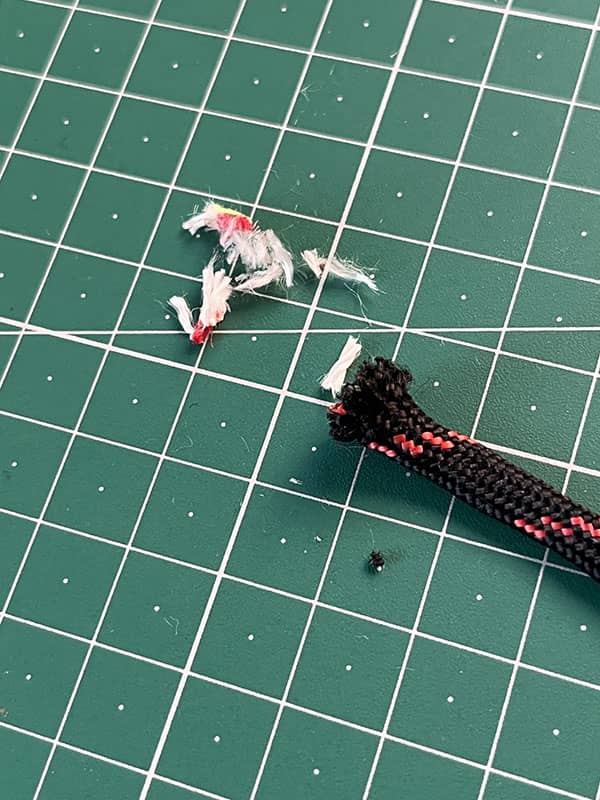
Make sure that the wick runs from one end to the other, then cut off any protruding wick.
-
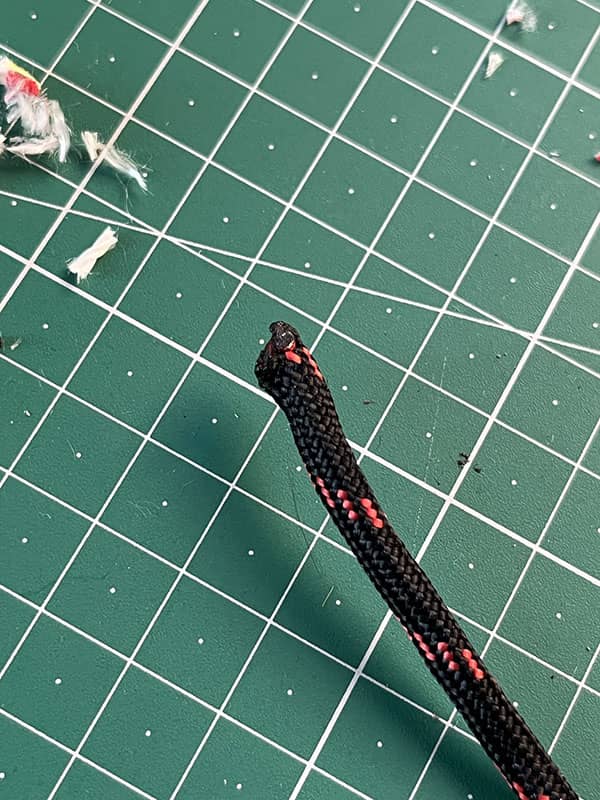
Put a lighter on the end to melt the outer skin.
When cutting the core of Step 1, instead of cutting it exactly to the outer skin, if you cut it 1 to 2 mm extra, it will not stick out when the outer skin is melted.
You can pull it out a little from its snug state, cut it, and then push it back in with a pen or similar tool.
The outer skin melts → becomes shorter → the core protrudes
When melting in Step 2, if it starts to melt, use the foot of a lighter to crush the melted part, which will easily seal the mouth.
Other ways to make it look nice include cutting with a heated cutter, heating There is also a way to stop it with a shrink tube.
